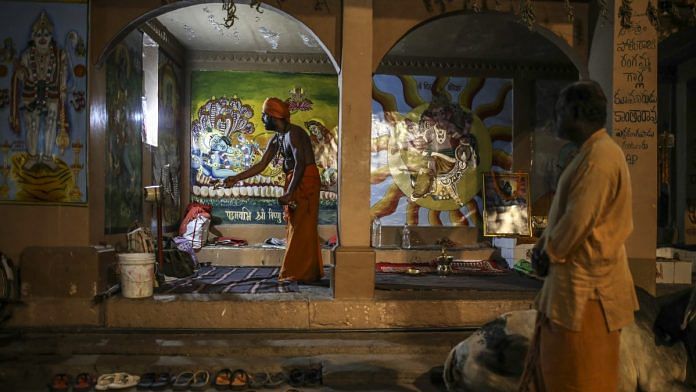The attempt is to identify local ‘influencers’ but there is another benefit the party hopes to draw from the exercise.
New Delhi: The Bharatiya Janata Party (BJP) is preparing to conduct a census of Hindu religious places — temples, mutts, and ashrams – that fall within each polling booth’s territory.
Data will also be collected on a given area’s caste composition as the party kicks into high gear ahead of the 2019 Lok Sabha election.
“List of temples, mutts and ashrams in (the area under) a booth should be ready along with list of samajik samikaran (social equations),” the BJP states in the to-do list prepared for every booth.
The temple census, BJP leaders say, will help the party identify “influencers” ahead of the 2019 Lok Sabha elections.
Also read: BJP begins media strategy audit with eye on 2019 elections
“There are influencers in every area. A priest or someone presiding over a religious place holds significance during elections,” a senior BJP leader told ThePrint. “They are likely to influence the decision of many followers. Tapping those influencers is crucial to winning any seat,” he added.
‘Samajik samikaran’, the leader said, meant the collation of percentage-wise caste data for every booth.
Known for micro-managing elections, BJP president Amit Shah is taking preparations to a new level with this exercise. The data is ostensibly being collected to identify influencers, but will also give the party an idea about the religious dynamics of a particular area.
These preparations come at a time when opposition parties are seeking to cobble together state-specific alliances that primarily include parties commanding the loyalty of certain castes and sub-castes.
The BJP, meanwhile, enters the campaign season amid opposition allegations that it is trying to revert to Hindutva politics to polarise voters in 2019. Traditionally perceived as a Brahmin-Baniya party, the BJP managed to expand its influence across caste lines in 2014 on the back of Prime Minister Narendra Modi’s popularity.
Five bikers, and Sangh connect
The other tasks in the to-do list include listing five bikers per booth, five WhatsApp groups, beneficiaries of government schemes, NGOs, and five smartphone users. The party will also zero in on five locations where its symbol, the lotus, can be painted.
Two to three people will be identified in every booth jurisdiction to keep people engaged, and enrol new members from the SC/ST and OBC communities.
Also read: Why is Congress helping BJP make 2019 a Hindu-Muslim election?
“This exercise will cover all possible dynamics that could play a part in the elections. We will ensure that all communities are attended to equally,” said a BJP functionary.
Party functionaries have also been asked to establish constant coordination with cadres of the Rashtriya Swayamsevak Sangh (RSS). “As the Sangh plays a crucial role in bringing voters to polling booths, coordination is of the essence,” the BJP leader added.
A fortnightly review will be conducted by BJP general secretaries state-wise to ensure progress on the tasks. Each meeting will focus on one sector, which typically comprises 10 booths.




let them count toilets
And Goongress will be counting The Loot of Corruption as always.